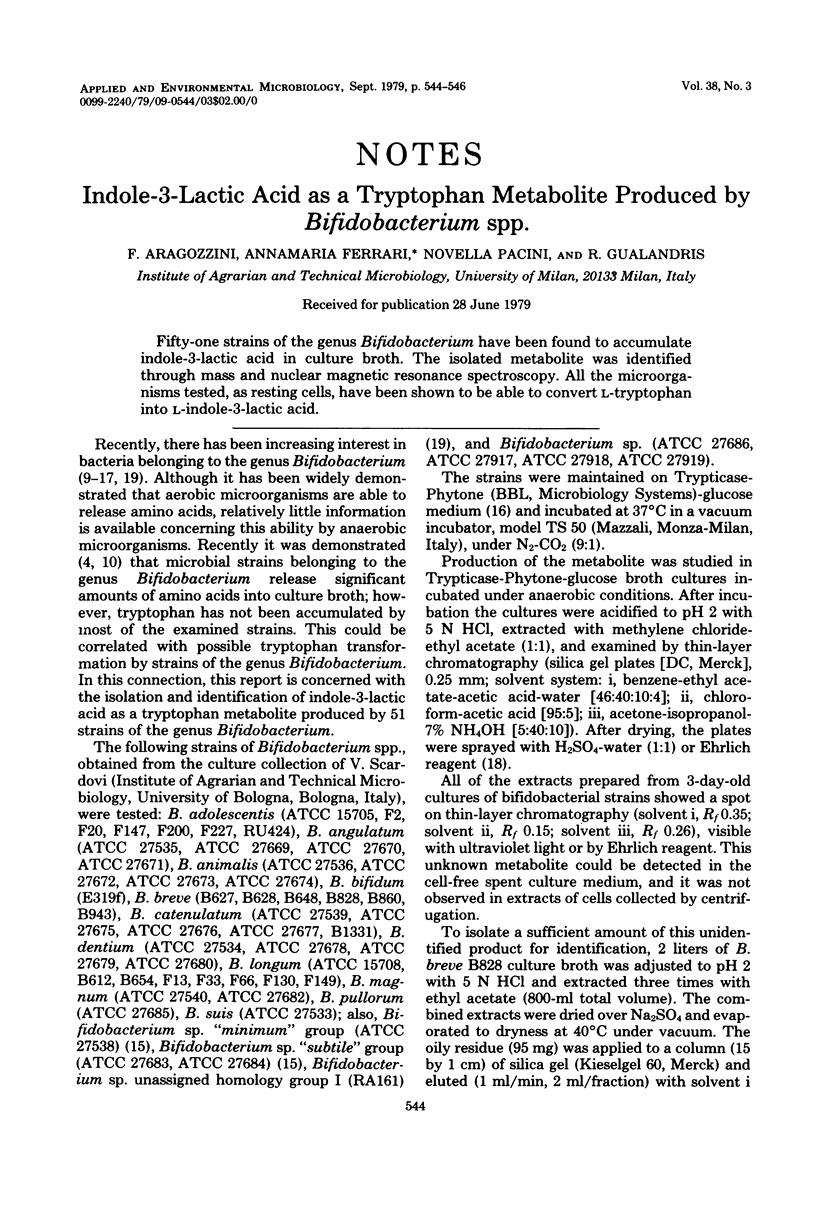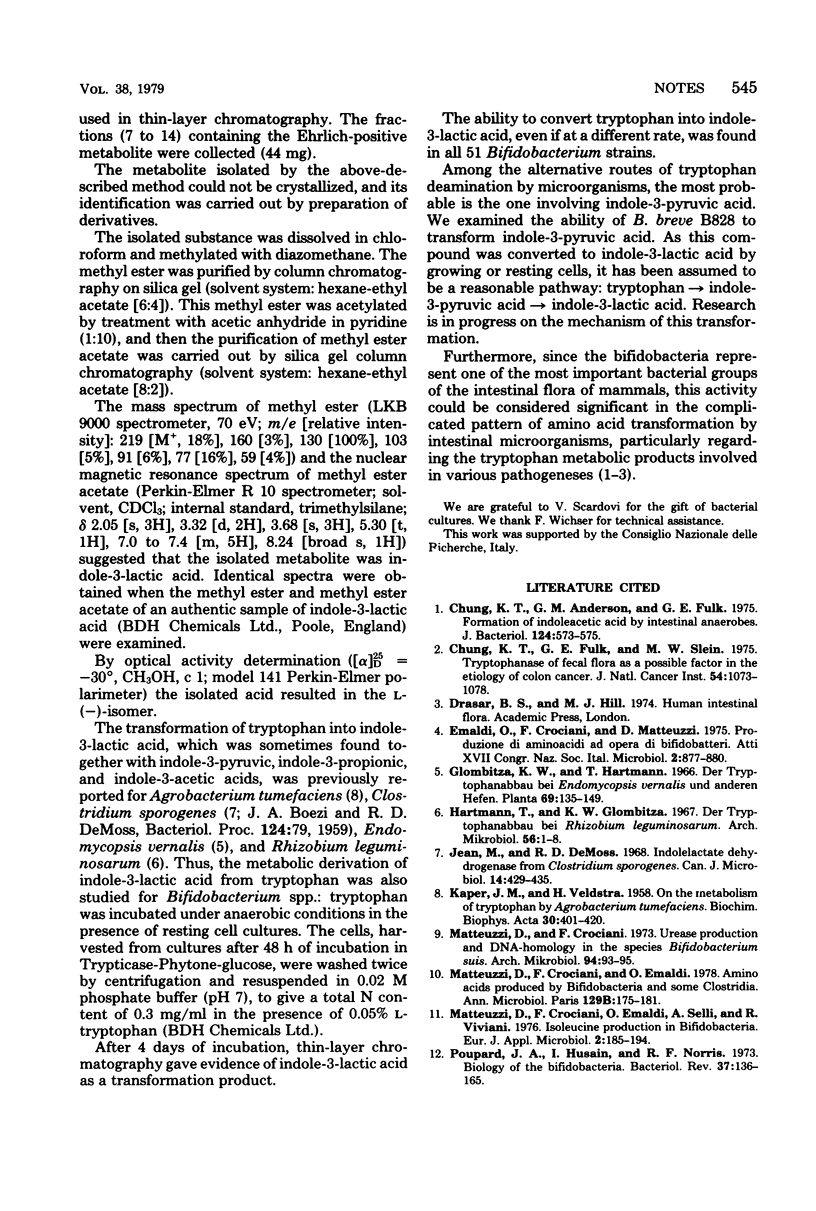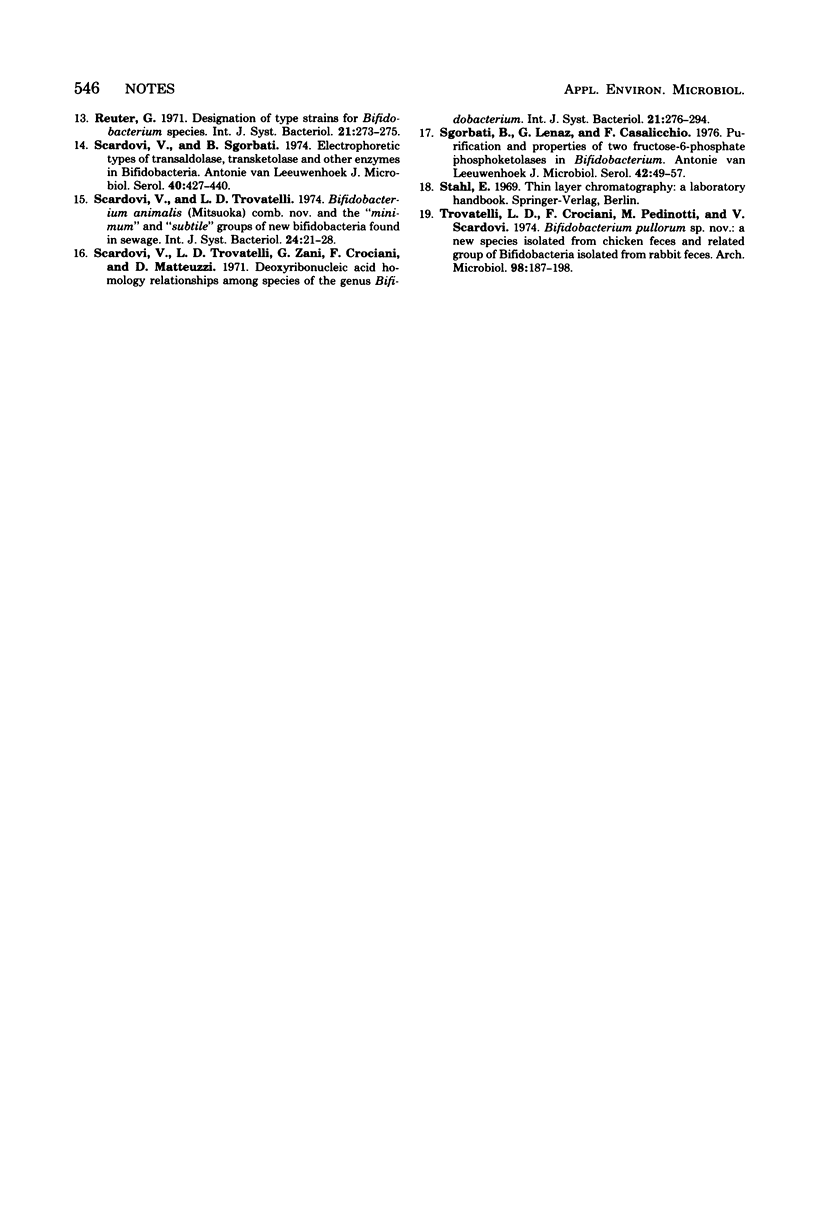Abstract
Fifty-one strains of the genus Bifidobacterium have been found to accumulate indole-3-lactic acid in culture broth. The isolated metabolite was identified through mass and nuclear magnetic resonance spectroscopy. All the microorganisms tested, as resting cells, have been shown to be able to convert L-tryptophan into L-indole-3-lactic acid.
Full text
PDF


Selected References
These references are in PubMed. This may not be the complete list of references from this article.
- Chung K. T., Anderson G. M., Fulk G. E. Formation of indoleacetic acid by intestinal anaerobes. J Bacteriol. 1975 Oct;124(1):573–575. doi: 10.1128/jb.124.1.573-575.1975. [DOI] [PMC free article] [PubMed] [Google Scholar]
- Chung K. T., Fulk G. E., Slein M. W. Tryptophanase of fecal flora as a possible factor in the etiology of colon cancer. J Natl Cancer Inst. 1975 May;54(5):1073–1078. doi: 10.1093/jnci/54.5.1073. [DOI] [PubMed] [Google Scholar]
- Hartmann T., Glombitza K. W. Der Tryptophanabbau bei Rhizobium leguminosarum. Arch Mikrobiol. 1967 Feb 1;56(1):1–8. [PubMed] [Google Scholar]
- Jean M., DeMoss R. D. Indolelactate dehydrogenase from Clostridium sporogenes. Can J Microbiol. 1968 Apr;14(4):429–435. doi: 10.1139/m68-068. [DOI] [PubMed] [Google Scholar]
- KAPER J. M., VELDSTRA H. On the metabolism of tryptophan by Agrobacterium tumefaciens. Biochim Biophys Acta. 1958 Nov;30(2):401–420. doi: 10.1016/0006-3002(58)90065-9. [DOI] [PubMed] [Google Scholar]
- Matteuzzi D., Crociani F., Emaldi O. Amino acids produced by bifidobacteria and some Clostridia. Ann Microbiol (Paris) 1978 Aug-Sep;129B(2):175–181. [PubMed] [Google Scholar]
- Matteuzzi D., Crociani F. Urease production and DNA-homology in the species bifidobacterium suis. Arch Mikrobiol. 1973 Dec 4;94(1):93–95. doi: 10.1007/BF00414081. [DOI] [PubMed] [Google Scholar]
- Poupard J. A., Husain I., Norris R. F. Biology of the bifidobacteria. Bacteriol Rev. 1973 Jun;37(2):136–165. doi: 10.1128/br.37.2.136-165.1973. [DOI] [PMC free article] [PubMed] [Google Scholar]
- Scardovi V., Sgorbati B. Electrophoretic types of transaldolase, transketolase, and other enzymes in bifidobacteria. Antonie Van Leeuwenhoek. 1974;40(3):427–440. doi: 10.1007/BF00399355. [DOI] [PubMed] [Google Scholar]
- Sgorbati B., Lenaz G., Casalicchio F. Purification and properties of two fructose-6-phosphate phosphoketolases in Bifidobacterium. Antonie Van Leeuwenhoek. 1976;42(1-2):49–57. doi: 10.1007/BF00399448. [DOI] [PubMed] [Google Scholar]
- Trovatelli L. D., Crociani F., Pedinotti M., Scardovi V. Bifidobacterium pullorum sp. nov.: a new species isolated from chicken feces and a related group of bifidobacteria isolated from rabbit feces. Arch Microbiol. 1974 Jul 16;98(3):187–198. doi: 10.1007/BF00425281. [DOI] [PubMed] [Google Scholar]


